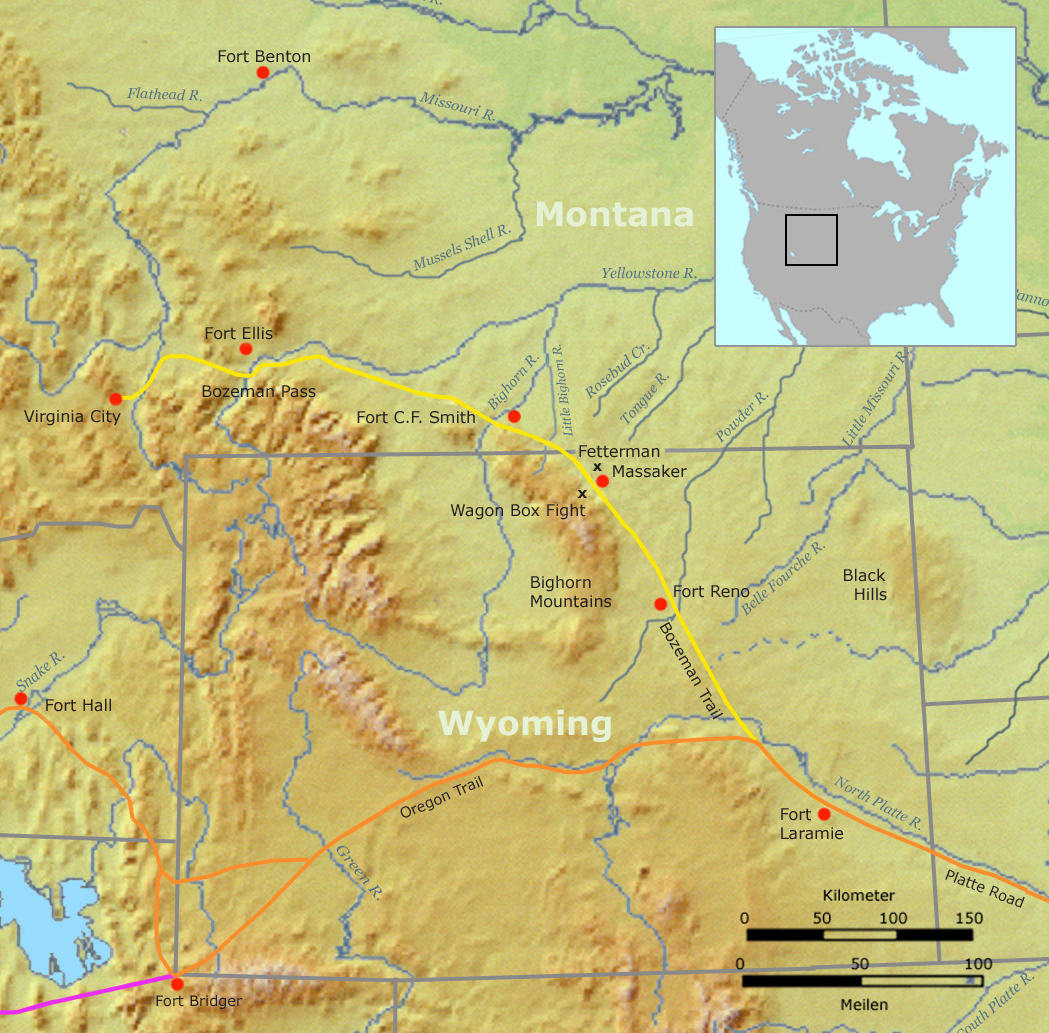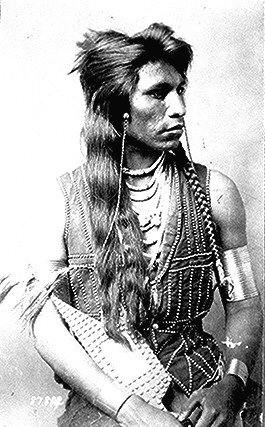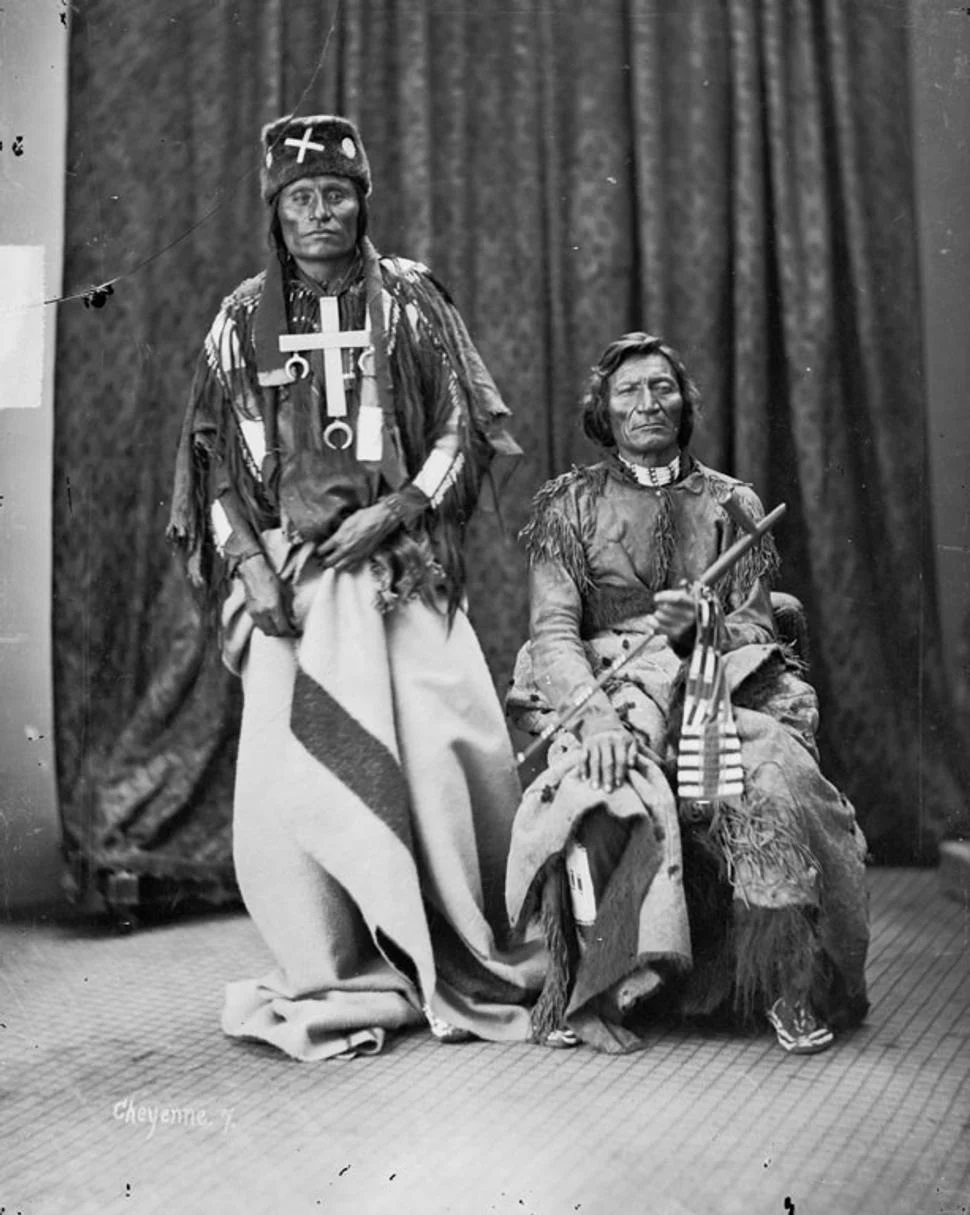|
A Warrior Who Fought Custer
''Wooden Leg: A Warrior Who Fought Custer'' is a 1931 book by Thomas Bailey Marquis about the life of a Northern Cheyenne Indian, Wooden Leg, who fought in several historic battles between United States forces and the Plains Indians, including the Battle of the Little Bighorn, where he faced the troops of George Armstrong Custer. The book is of great value to historians, not only for its eyewitness accounts of battles, but also for its detailed description of the way of life of 19th-century Plains Indians. The book was dictated to Marquis by Wooden Leg in Plains Indian Sign Language, their only common language. Marquis gathered the stories for the book from Wooden Leg and others while he was physician at the Indian agent, agency in Montana from 1922. They were reluctant to open up to him at first, but eventually Marquis gained their trust. Wooden Leg lived through some of the most turbulent times in Cheyenne history, but the book begins with his childhood and descriptions of ... [...More Info...] [...Related Items...] OR: [Wikipedia] [Google] [Baidu] |
A Warrior Who Fought Custer
''Wooden Leg: A Warrior Who Fought Custer'' is a 1931 book by Thomas Bailey Marquis about the life of a Northern Cheyenne Indian, Wooden Leg, who fought in several historic battles between United States forces and the Plains Indians, including the Battle of the Little Bighorn, where he faced the troops of George Armstrong Custer. The book is of great value to historians, not only for its eyewitness accounts of battles, but also for its detailed description of the way of life of 19th-century Plains Indians. The book was dictated to Marquis by Wooden Leg in Plains Indian Sign Language, their only common language. Marquis gathered the stories for the book from Wooden Leg and others while he was physician at the agency in Montana from 1922. They were reluctant to open up to him at first, but eventually Marquis gained their trust. Wooden Leg lived through some of the most turbulent times in Cheyenne history, but the book begins with his childhood and descriptions of Cheyenne cu ... [...More Info...] [...Related Items...] OR: [Wikipedia] [Google] [Baidu] |
Northern Cheyenne Indian Reservation
The Northern Cheyenne Tribe of the Northern Cheyenne Indian Reservation () is the federally recognized Northern Cheyenne tribe and a Plains tribe. The Northern Cheyenne Indian Reservation is reservation located in southeastern Montana, that is approximately large. It is home to approximately 6,000 Cheyenne people. The reservation is bounded on the east by the Tongue River and on the west by the Crow Reservation. There are small parcels of non-contiguous off-reservation trust lands in Meade County, South Dakota, northeast of the city of Sturgis. Its timbered ridges that extend into northwestern South Dakota are part of Custer National Forest and it is approximately east of the site of the 1876 Battle of the Little Bighorn. In March 2013, the Northern Cheyenne Tribe had 12,266 people enrolled citizens, of which about 6,012 resided on the reservation, with approximately 91% of the population Native American (full or part blood quantum) and 72.8% identifying as Cheyenne. Sli ... [...More Info...] [...Related Items...] OR: [Wikipedia] [Google] [Baidu] |
Ogallala Sioux
The Oglala (pronounced , meaning 'to scatter one's own' in Lakota) are one of the seven subtribes of the Lakota people who, along with the Dakota, make up the Očhéthi Šakówiŋ (Seven Council Fires). A majority of the Oglala live on the Pine Ridge Indian Reservation in South Dakota, the eighth-largest Native American reservation in the United States. The Oglala are a federally recognized tribe whose official title is the called the Oglala Sioux Tribe of the Pine Ridge Reservation, South Dakota. History Oglala elders relate stories about the origin of the name "Oglala" and their emergence as a distinct group, probably sometime in the 18th century. Conflict with the European settlers In the early 19th century, Europeans and American passed through Lakota territory in increasing numbers. They sought furs, especially beaver fur at first, and later bison fur. The fur trade changed the Oglala economy and way of life. In 1868, the United States and the Great Sioux Nation signed ... [...More Info...] [...Related Items...] OR: [Wikipedia] [Google] [Baidu] |
Powder River (Montana)
Powder River is a tributary of the Yellowstone River, approximately long in northeastern Wyoming and southeastern Montana in the United States. Combined with its tributary, the South Fork Powder River, it is 550 miles long. It drains an area historically known as the Powder River Country on the high plains east of the Bighorn Mountains. It rises in three forks in north central Wyoming. The North and Middle forks rise along the eastern slope of the Bighorn Mountains. The South Fork rises on the southern slopes of the Bighorn Mountains west of Casper. The three forks meet on the foothills east of the Bighorns near the town of Kaycee. The combined stream flows northward, east of the Bighorns, and into Montana. It accepts the Little Powder near the town of Broadus, and discharges into the Yellowstone approximately downriver from Miles City, Montana. The Powder River was so named (in the English language as well as in local indigenous languages) because the sand along a porti ... [...More Info...] [...Related Items...] OR: [Wikipedia] [Google] [Baidu] |
Tongue River (Montana)
The Tongue River is a tributary of the Yellowstone River, approximately 265 mi (426 km) long, in the U.S. states of Wyoming and Montana. The Tongue rises in Wyoming in the Big Horn Mountains, flows generally northeast through northern Wyoming and southeastern Montana, and empties into the Yellowstone River at Miles City, Montana. Most of the course of the river is through the beautiful and varied landscapes of eastern Montana, including the Tongue River Canyon, the Tongue River breaks, the pine hills of southern Montana, and the buttes and grasslands that were formerly the home of vast migratory herds of American bison. The Tongue River watershed encompasses parts of the Cheyenne and Crow Reservations in Montana. The headwaters lie on the Bighorn National Forest in Wyoming, and the watershed encompasses the Ashland Ranger District of the Custer National Forest. The river's name corresponds to Cheyenne ''/vetanoveo'he/'', where ''/vetanove/'' means "tongue" and ''/o'he' ... [...More Info...] [...Related Items...] OR: [Wikipedia] [Google] [Baidu] |
Bozeman Trail
The Bozeman Trail was an overland route in the Western United States, connecting the gold rush territory of southern Montana to the Oregon Trail in eastern Wyoming. Its important period was from 1863 to 1868. While the major part of the route used by Bozeman Trail travelers in 1864 was pioneered by Allen Hurlbut, it was named after John Bozeman. Many miles of the Bozeman Trail in present Montana followed the tracks of Bridger Trail, opened by Jim Bridger in 1864. The flow of pioneers and settlers through territory of Native Americans provoked fear and anger in the local tribes; some of whom chose to respond with aggressive, and even violent action. The challengers to the route were newly arrived Lakotas and their Native allies, the Arapahoe and the Cheyenne. The United States put emphasis on a right to "establish roads, military and other posts" as described in Article 2 in the Fort Laramie Treaty of 1851. All parties in the conflict had signed that treaty. The Crow Natives he ... [...More Info...] [...Related Items...] OR: [Wikipedia] [Google] [Baidu] |
Red Cloud
Red Cloud (; – December 10, 1909) was a leader of the Oglala Lakota from 1865 to 1909. He was one of the most capable Native American opponents whom the United States Army faced in the western territories. He led the Lakota to victory over the United States during Red Cloud's War, establishing the Lakota as the only nation to defeat the United States on American soil. The largest action of the war was the 1866 Fetterman Fight, with 81 US soldiers killed; it was the worst military defeat suffered by the US Army on the Great Plains until the Battle of the Little Bighorn 10 years later. After signing the Treaty of Fort Laramie (1868), Red Cloud led his people in the transition to reservation life. Some of his opponents mistakenly thought of him as the overall leader of the Sioux groups (Dakota, Lakota, and Nakota), but the large tribe had several major divisions and was highly decentralized. Bands among the Oglala and other divisions operated independently, though some indivi ... [...More Info...] [...Related Items...] OR: [Wikipedia] [Google] [Baidu] |
Red Cloud's War
Red Cloud's War (also referred to as the Bozeman War or the Powder River War) was an armed conflict between an alliance of the Lakota people, Lakota, Cheyenne, Northern Cheyenne, and Northern Arapaho peoples against the United States and the Crow people, Crow Nation that took place in the Wyoming Territory, Wyoming and Montana Territory, Montana territories from 1866 to 1868. The war was fought over control of the western Powder River Country in present day north-central Wyoming and Montana. In 1863, European Americans had blazed the Bozeman Trail through the heart of the traditional territory of the Cheyenne, Arapaho, and Lakota. It was the shortest and easiest route from Fort Laramie and the Oregon Trail to the Montana gold fields. From 1864 to 1866, the trail was traversed by about 3,500 miners, emigrant settlers and others, who competed with the Indians for the diminishing resources near the trail. [...More Info...] [...Related Items...] OR: [Wikipedia] [Google] [Baidu] |
Shoshone
The Shoshone or Shoshoni ( or ), also known by the endonym Newe, are an Native Americans in the United States, Indigenous people of the United States with four large cultural/linguistic divisions: * Eastern Shoshone: Wyoming * Northern Shoshone: Southern Idaho * Western Shoshone: California, Nevada, and Northern Utah * Goshute: western Utah, eastern Nevada They traditionally speak the Shoshoni language, part of the Numic languages branch of the large Uto-Aztecan languages, Uto-Aztecan language family. The Shoshone were sometimes called the Snake Indians by neighboring tribes and early American explorers. Their peoples have become members of List of federally recognized tribes, federally recognized tribes throughout their traditional areas of settlement, often co-located with the Northern Paiute people of the Great Basin. Etymology The name "Shoshone" comes from ''Sosoni'', a Shoshoni language, Shoshone word for high-growing grasses. Some neighboring tribes call the Shoshone ... [...More Info...] [...Related Items...] OR: [Wikipedia] [Google] [Baidu] |
Black Hills
The Black Hills is an isolated mountain range rising from the Great Plains of North America in western South Dakota and extending into Wyoming, United States. Black Elk Peak, which rises to , is the range's highest summit. The name of the range in Lakota is '. It encompasses the Black Hills National Forest. It formed as a result of an upwarping of ancient rock, after which the removal of the higher portions of the mountain mass by stream erosion produced the present-day topography. The hills are so called because of their dark appearance from a distance, as they are covered in evergreen trees. American Indian tribes have a long history in the Black Hills and consider it a sacred site. After conquering the Cheyenne in 1776, the Lakota took the territory of the Black Hills, which became central to their culture. In 1868, the federal US government signed the Fort Laramie Treaty of 1868, establishing the Great Sioux Reservation west of the Missouri River, and exempting the Black ... [...More Info...] [...Related Items...] OR: [Wikipedia] [Google] [Baidu] |
Cheyenne Using Travois
The Cheyenne ( ) are an Indigenous people of the Great Plains. The Cheyenne comprise two Native American tribes, the Só'taeo'o or Só'taétaneo'o (more commonly spelled as Suhtai or Sutaio) and the (also spelled Tsitsistas, The term for the Cheyenne homeland is ''Tsistano''. Language The Cheyenne of Montana and Oklahoma speak the Cheyenne language, known as ''Tsėhésenėstsestȯtse'' (common spelling: Tsisinstsistots). Approximately 800 people speak Cheyenne in Oklahoma. There are only a handful of vocabulary differences between the two locations. The Cheyenne alphabet contains 14 letters. The Cheyenne language is one of the larger Algonquian-language group. Formerly, the Só'taeo'o (Só'taétaneo'o) or Suhtai (Sutaio) bands of Southern and Northern Cheyenne spoke ''Só'taéka'ėškóne'' or ''Só'taenėstsestȯtse'', a language so close to ''Tsėhésenėstsestȯtse'' (Cheyenne language), that it is sometimes termed a Cheyenne dialect. History The earliest written reco ... [...More Info...] [...Related Items...] OR: [Wikipedia] [Google] [Baidu] |
Northern Cheyenne Exodus
The Northern Cheyenne Exodus, also known as Dull Knife's Raid, the Cheyenne War, or the Cheyenne Campaign, was the attempt of the Northern Cheyenne to return to the north, after being placed on the Southern Cheyenne indian reservation, reservation in the Indian Territory, and the United States Army operations to stop them. The period lasted from 1878 to 1879. Background Following the Battle of the Little Bighorn, attempts by the U.S. Army to subdue the Northern Cheyenne intensified. In 1877, after the previous November's Dull Knife Fight, Crazy Horse surrendered at Fort Robinson in northwestern Nebraska a few Cheyenne chiefs and their people surrendered as well. The chiefs that surrendered at the fort were Dull Knife, Little Wolf, Standing Elk, and Wild Hog with nearly one thousand Cheyenne. On the other hand, Two Moon surrendered at Fort Keogh with three hundred Cheyenne in 1877. The Cheyenne wanted and expected to live on the reservation with the Sioux in accordance with an Apri ... [...More Info...] [...Related Items...] OR: [Wikipedia] [Google] [Baidu] |








